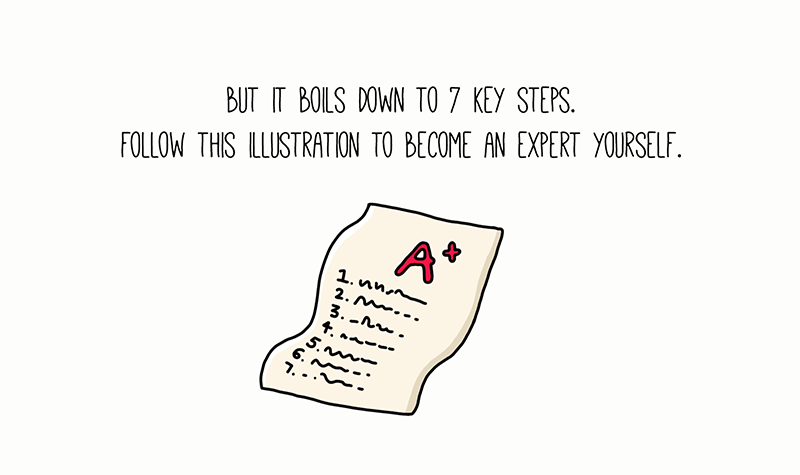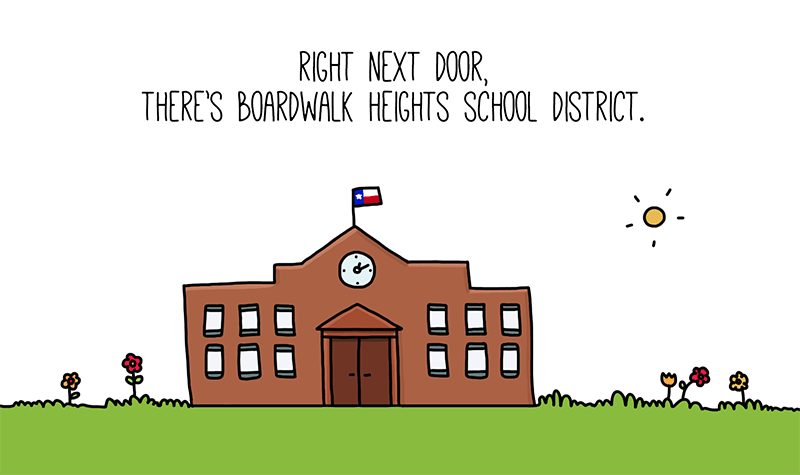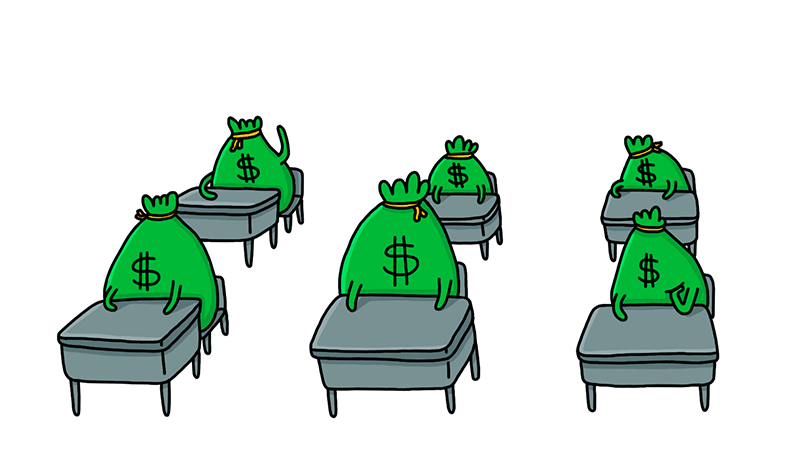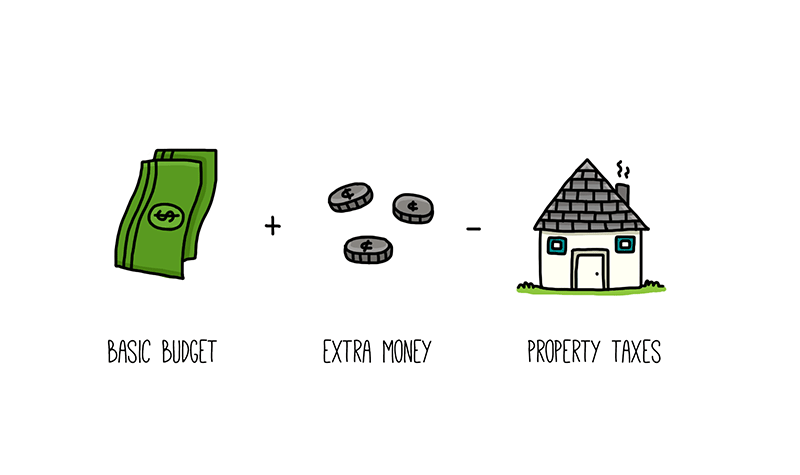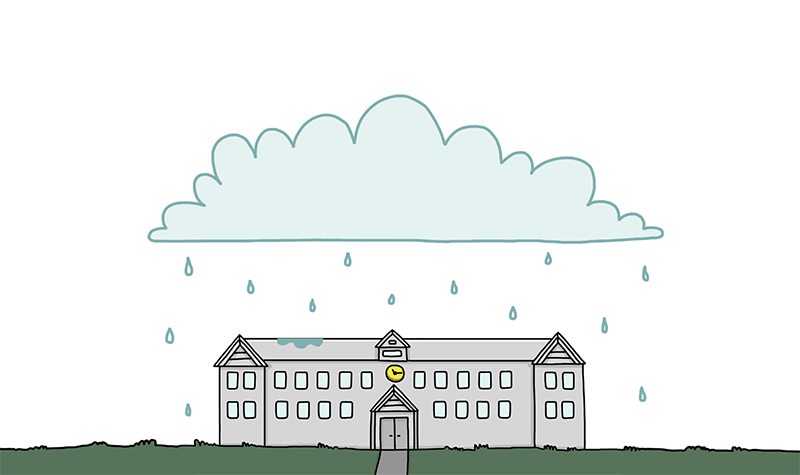Learn How Texas Funds Public Schools In 7 Easy Steps
Laura Isensee, Houston Public Media
Scroll down to become an expert yourself.
STEP 1: Pick a school district.
It's urban with hundreds of thousands of students. Most of them low-income and many are learning English.
It has just a few thousand students. None of them are low-income or learning English.
It has a nuclear power plant, one mansion and servant quarters. It has just 100 students. All of them are low-income.
STEP 2: Set a basic budget for each student in all districts.
State lawmakers set the basic budget. Let's say $5,000 per student. They determine the budget based on how much they decide to spend on education overall – not on how much academic standards cost.
STEP 3: Add extra money for certain students and certain districts.
On top of the basic budget, Texas gives extra money for students who need more support, like English-language learners and low-income students.
The state gives extra add-on money for them. It's called a "weight." Think of it like a percentage.
Students who are learning English get an extra 10 percent.
Gifted and talented students get an extra 12 percent.
Students from low-income families get an extra 20 percent.
Some districts – like small ones – get a big bump, too.
Many of these add-on weights have not been updated in the state formula since 1984, back when Ronald Reagan was president.
Experts say they should be at least doubled or more.
STEP 4: Raise money for the school budget from local property taxes.
The more valuable the property, the easier it is to raise money for school.
The Gotham School District has lots of homes and businesses and even some cattle land. Its property is worth tens of billions of dollars. In fact, it has the most property wealth. But it also has the most students.
The Mr. Burns Estates School District is second in property wealth. Its nuclear power plant is worth several billion dollars. But it has very few students, so it raises a huge amount of money per student.
Then Boardwalk Heights is worth a couple billion dollars. It's full of multimillion dollar mansions. Since it doesn't have too many kids, it can raise more than enough money per student.
STEP 5: Set a tax rate.
The school board in each district votes on a tax rate.
The more property value in the district, the lower the tax rate can be and still manage to raise the basic budget for each student.
STEP 6: Add it up.
Take the basic budget per student, add the extra money for certain groups and then subtract that from the property taxes.
STEP 7: Don't forget the state financial aid.
The state tries to fill in what the local property taxes don't provide to reach that basic budget per student.
It redistributes money from those districts that raise far more money than the budget per student — like Mr. Burns Estates.
But the state doesn't add enough to Gotham to catch them up to Mr. Burns Estates or Boardwalk Heights, even after it takes some money away from those two richer districts.
The Mr. Burns Estates School District makes out the best because it has the most wealth and the fewest students.
The Gotham School District makes out the worst because even though it has a lot of property to tax, it has so many students with different needs that it still struggles.
ATTRIBUTION
Art by Michelle Porucznik Based on exercises created by Scott Hochberg, lecturer at Rice University Developed by Laura Isensee
Support for this series was provided by "The Equity Reporting Project: Restoring the Promise of Education," which was developed by Renaissance Journalism with funding from the Ford Foundation.



